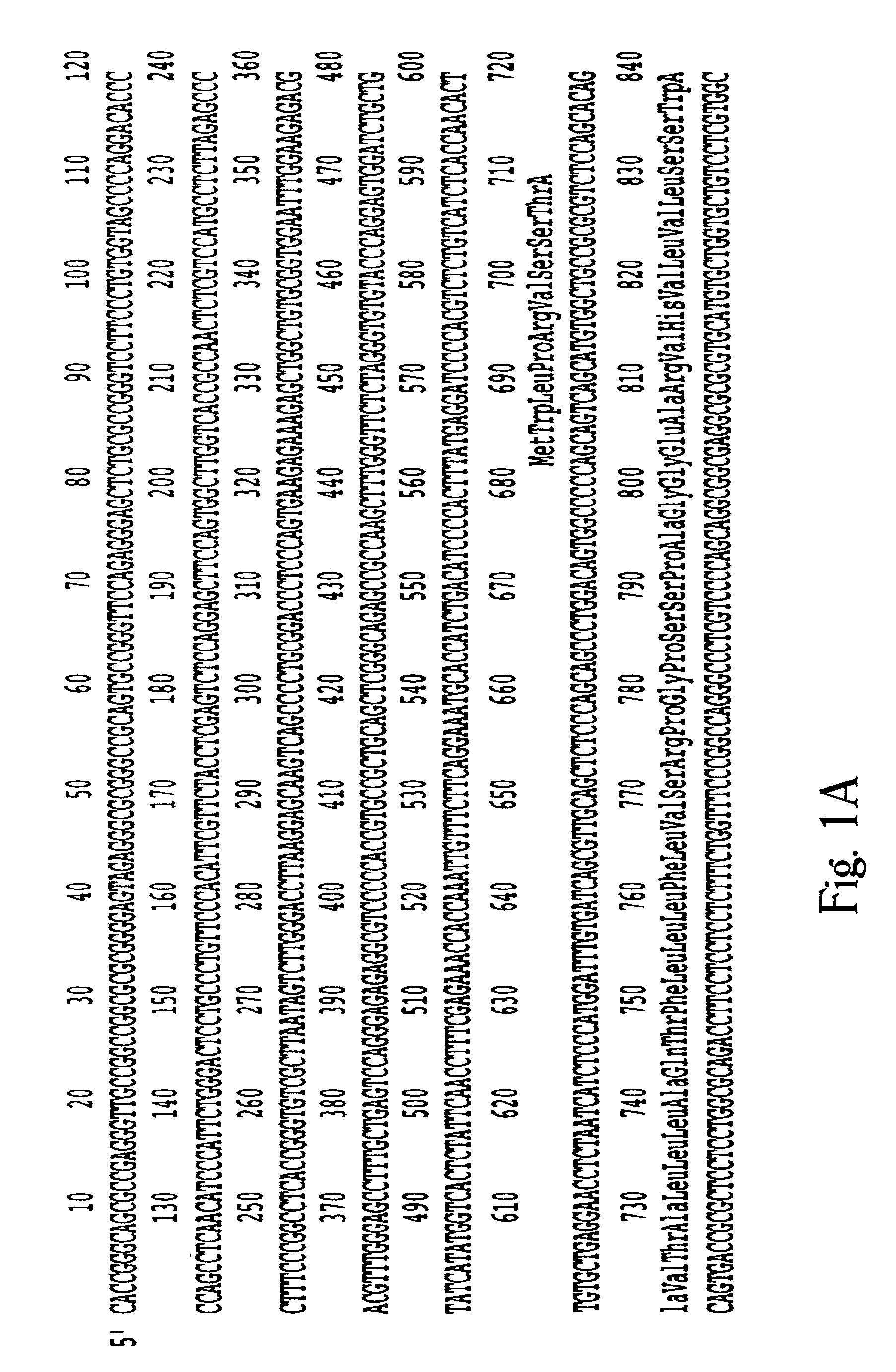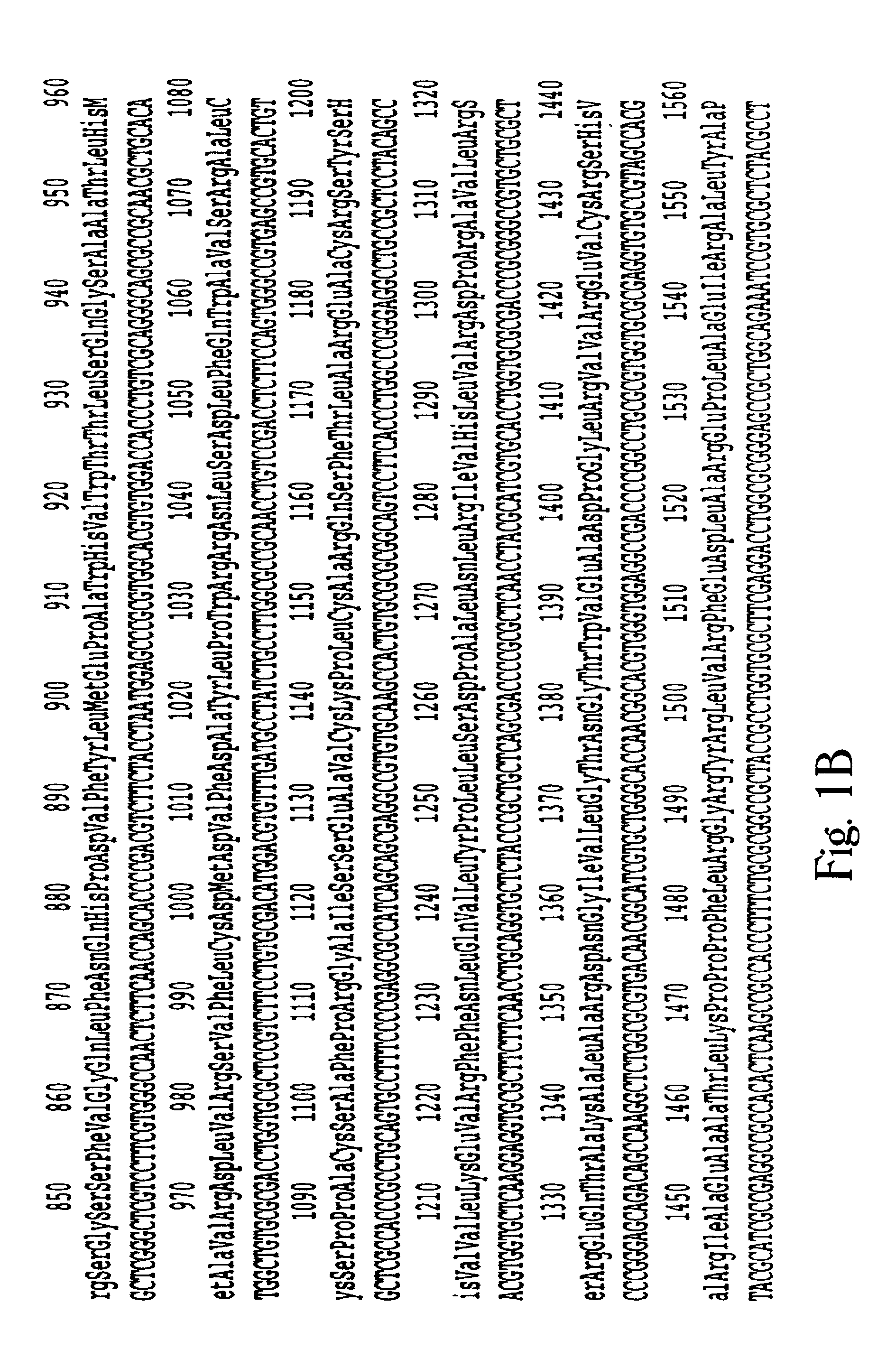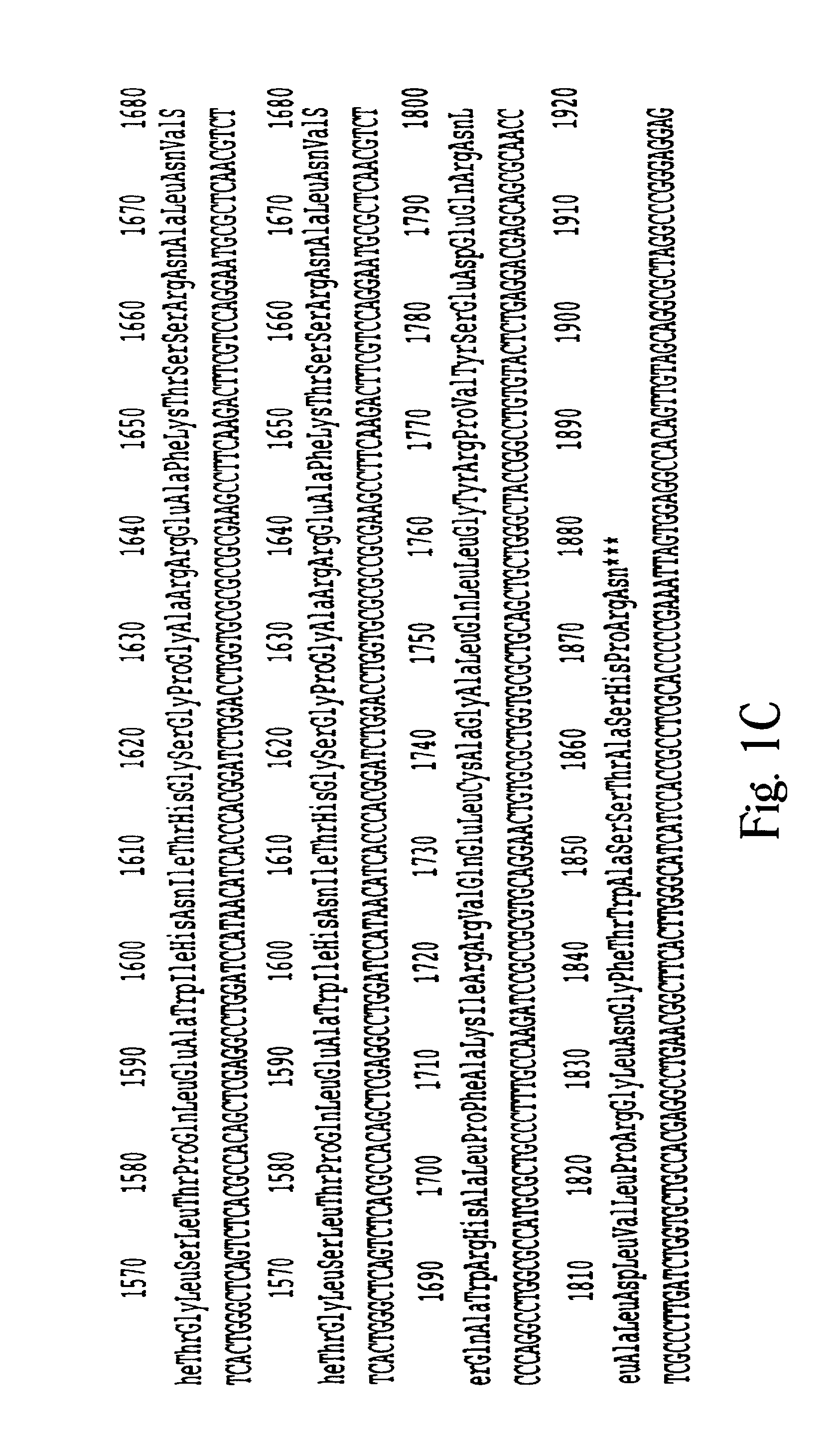Methods of treating macular corneal dystrophy
a technology of keratin sulfate and macular corneal dystrophy, which is applied in the field of ophthalmology and keratin sulfate biology, can solve the problems of affecting the treatment effect,
- Summary
- Abstract
- Description
- Claims
- Application Information
AI Technical Summary
Benefits of technology
Problems solved by technology
Method used
Image
Examples
example ii
Characterization of Human Corneal GlcNAc6ST
[0125] This example shows that the corneal GlcNAc6ST identified herein is homologous to and proximally located to the intestinal GlNAc6ST, CHST5.
[0126] The full length cDNA human corneal GlcNAc6ST is predicted to encode a membrane protein consisting of 395 amino acids. Multiple sequence alignment of this cDNA was performed using Clustal W version 1.7 (Thompson et al., Nucleic Acids Res. 22:4673-4680 (1994)) and I-GlcNAc6ST (human intestinal GlcNAc-6-sulfotransferase; Lee et al., Biochem. Biophys. Res. Commun. 263:543-549 (1999)); HEC-GlcNAc6ST (human high-endothelial-cell GlcNAc-6-sulfotransferase; Bistrup et al., J. Cell Biol., 145:899-910 (1999)); GlcNAc6ST (human GlcNAc-6-sulfotransferase; Uchimura et al., J. Biochem., 124:670-678 (1998)); KSG6ST (human KS Gal-6-sulfotransferase; (Fukuta et al., J. Biol. Chem., 272:32321-32328 (1997)); and Ch6ST (human chondroitin-6-sulfotransferase; Fukuta et al., Biochim. Biophys. Acta, 1399:57-61 (199...
example iii
Expression of Human Corneal GlcNAc6ST IS Absent from the Corneal Epithelium of a Mcd Type II Patient
[0128] This example demonstrates that the expression pattern of CHST6 mRNA in the cornea corresponds to the presence of sulfated keratan sulfate, and that CHST6 is not detectably expressed in corneal epithelial cells of a MCD type II patient.
[0129] The expression profile of CHST6 mRNA and the presence of sulfated keratan sulfate (sulfated KS) were analyzed in normal human cornea by in situ hybridization and immunohistochemistry (FIG. 4A through FIG. 4L). CHST6-specific DNA was amplified by PCR using CK71h-F1858 (5'-CACGAGGCCTGAACGGCTTCAC-3'; SEQ ID NO: 18) and CK71h-R1949 (5'-CGGGCCTAGCGCCTGCTACAAC-3'; SEQ ID NO: 19). This amplicon was cloned into the SmaI site of pGEM3Zf(+) (Promega; Madison, Wis.) and used to prepare RNA probes by DIG RNA Labeling Kit (Boehringer Mannheim; Indianapolis, Ind.). In situ hybridization was performed as described in Kawakami et al., Cancer Res. 57:2321-2...
example iv
Mutations Associated with Mcd Type I
[0132] This example shows that MCD Type I occurs as a result of mutations that inactivate C-GlcNAc6ST.
[0133] Genomic PCR followed by direct-sequence analysis was carried out in searching for mutations in the coding regions of CHST6 of MCD patients and normal individuals. The coding region of CHST6 was amplified by PCR using the following primers: for the 5'-coding region, CK71h-intrn (5'-GCCCCTAACCGCTGCGCTCTC-3'; SEQ ID NO: 20) and Ck71h-R1180 (5'-GGCTTGCACACGGCCTCGCT-3'; SEQ ID NO: 21); for the middle coding region, CK71h-F1041 (5'-GACGTGTTTGATGCCTATCTGCCTTG-3'; SEQ ID NO: 22) and CK71h-R1674 (5'-CGGCGCGCACCAGGTCCA-3'; SEQ ID NO: 23); for the 3'-coding region, CK71h-F1355 (5'-CTCCCGGGAGCAGACAGCCAA-3'; SEQ ID NO: 24) and CK71h-R1953 (5'-CTCCCGGGCCTAGCGCCT-3'; SEQ ID NO: 25). Each PCR reaction was carried out in 25 .mu.l according to the conditions described in Example I, with the exception of the cycled extension reaction lasting 45 seconds and th...
PUM
| Property | Measurement | Unit |
|---|---|---|
| Magnetic field | aaaaa | aaaaa |
| Magnetic field | aaaaa | aaaaa |
| Electric charge | aaaaa | aaaaa |
Abstract
Description
Claims
Application Information
 Login to View More
Login to View More - R&D
- Intellectual Property
- Life Sciences
- Materials
- Tech Scout
- Unparalleled Data Quality
- Higher Quality Content
- 60% Fewer Hallucinations
Browse by: Latest US Patents, China's latest patents, Technical Efficacy Thesaurus, Application Domain, Technology Topic, Popular Technical Reports.
© 2025 PatSnap. All rights reserved.Legal|Privacy policy|Modern Slavery Act Transparency Statement|Sitemap|About US| Contact US: help@patsnap.com



